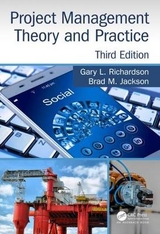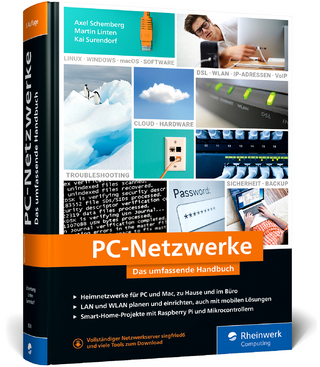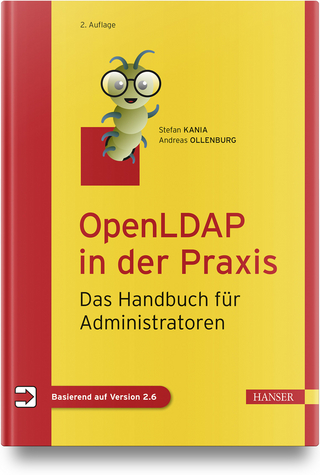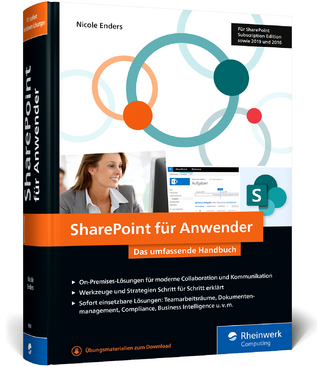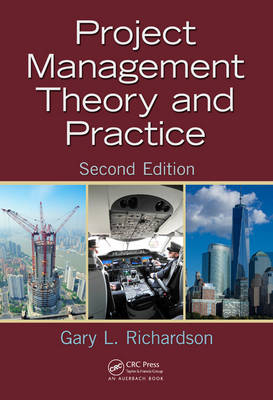
Project Management Theory and Practice
Apple Academic Press Inc. (Verlag)
978-1-4822-5495-2 (ISBN)
- Titel erscheint in neuer Auflage
- Artikel merken
The book integrates the organizational environment that surrounds a project to supply the well-rounded knowledge of theories, organizational issues, and human behavior needed to manage real-world projects effectively. This edition includes a new chapter on Stakeholder Management, which is a new knowledge area covered in the new PMBOK® Guide. It also provides updated references and a new streamlined organization of chapters. There are several project-related model frameworks sponsored by PMI®, and many of these are covered in this text. Specifically, the book details:
Work breakdown structures (WBS)
Earned value management (EVM)
Enterprise project management (EPMO)
Portfolio management (PPM)
Professional responsibility and ethics
For many of the major sections, the PMI Global Accreditation curriculum learning objectives have been adapted with permission of PMI and used to guide the content. Filled with end-of-chapter questions, scheduling and budgeting problems, and scoping projects, this text is ideal for classroom use and essential reading for anyone seeking project management certification. The book also includes sample empirically oriented worksheets that demonstrate various management decision and analysis-oriented tools.
Gary Richardson is the PMI endowed professor of project management at the University of Houston College of Technology graduate project management program. This program serves both the internal and external professional community in regard to the theory and practice of project management. He comes from a broad professional background including industry, consulting, government, and academia. During the early phase of his career he was an officer in the U.S. Air Force, followed by industry stints at Texas Instruments as a manufacturing engineer, and then by consulting assignments at the Defense Communications Agency, Department of Labor, and the U.S. Air Force (Pentagon) in Washington, D.C. The latter half of his career was spent with Texaco, Star Enterprise (Texaco Aramco joint venture), and Service Corporation International in various IT and CIO-level management positions. Interspersed through these periods he was a professor at Texas A&M, the University of South Florida, and the University of Houston, and also did other adjunct professor stints at three other universities. Gary has previously published four computer-related textbooks and numerous technical articles. Through his experiences in over 100 significant sized projects of various types, he has observed frequently encountered management issues and has been an active participant in the evolution of management techniques that have occurred over this time. Gary received a BS in mechanical engineering from Louisiana Tech, an AFIT postgraduate program in meteorology at the University of Texas, an MS in engineering management from the University of Alaska, and a PhD in business administration from the University of North Texas. He currently teaches the PMP Prep course and other graduate-level project management courses at the University of Houston, plus various continuing education courses.
CONCEPTUAL OVERVIEW OF THE PROJECT ENVIRONMENT
Introduction
Project Management
Role of the PM
PM Skills
Success Management
Appendices
References
Evolution of Project Management
Early History of Project Management
Application of Analytical Science
Frederick Taylor and Scientific Management
Frank and Lillian Gilbreth
Henry Gantt
Mary Parker Follett
Elton Mayo
Phases of Project Management Evolution
Project Management Challenges
Project Management Benefits
At the Macrolevel
At the Microlevel
References
Project Management Body of Knowledge
High-Level Overview
History of PMBOK® Guide Development
Structure of the PMBOK® Guide
Project Domains
Knowledge Areas
Introductory Vocabulary Terms
Ancillary Models
Summary
Reference
Industry Trends in Project Management
Standardizing Project Management
Enterprise Project Management
EPM in Operation
Implementation and Advantages of EPM
Other Trends Impacting Project Management
Project Management Perspective
Discussion Questions
References
Project Types
Reference
Project Organization Concepts
PM’s Role
Reporting Relationships
Team Resources
Team Productivity and Size
Team’s Physical Location Issues
Virtual Organizations
Organizational Culture
Summary
References
Project Life Cycle Models
Overview of Project Methodologies
Life Cycle Management Process
Feasibility Review
Project Plan
Logical versus Physical Design
Quality Control and Quality Assurance
Monitor and Control
Periodic Status Reviews
Milestone or Stage Gate Reviews
Project Close
Project Communication Processes
Life Cycle Models
Templates
Key Project Management Artifacts
Initiating
Planning
Execution
Monitoring and Control
Baseline
Project Methodology Models
Summary Points
References
Quick Start Example
Project Management Work Packages
WP Dictionary
Multiple WPS
Psychology of Estimating
Procrastination
Developing the Whole Project View
Project Scope
Example: Pool Project Mechanics
Quick Start Wrap-Up
Discussion Questions
Reference
Concluding Remarks for Part 1
PROJECTS AS STATE CHANGE VEHICLES
Role of Projects in the Organization
Project Valuation Models
Project Selection Strategies
Conclusion
References
Project Initiation
Introduction
Environmental Factors to Consider
User Involvement
Executive Management Support
Experienced PM
Communications
Clear Business Objectives
Minimized Scope
Other Success Factors
Agile Development Approaches
Existence of a Standard Process Infrastructure
Use of a Standard Methodology
Reliable Time Estimates
Availability of Appropriate Skills
Industry and Organizational Culture
Project Success Trends
Forecasting the Success of Technology Projects
Conclusion
References
DEFINING THE TRIPLE CONSTRAINTS
Project Plan Development
Arguments for Planning
Project Monitoring and Control
Conflicting Expectations
Overlooking the Real Solution
Competing Solutions
Misaligned Goals
Quality Solutions
Plan Process and Components
Initial Planning View
Plan Artifacts
Real-World Planning Process
Conclusion
References
Scope Management
Defining Project Work Units
WP Planning Variables
Multiple WPs
Developing the Project View
Developing Project WBS
WBS Mechanics
WBS Numbering Scheme
WBS Dictionary
Other WBS Views
Tracking Status of the WP
WBS Construction Mechanics
Requirements "ibilities"
Moving Forward
References
Time Management
Defining Project Work Activities
Define Activities
Activity Sequencing
Estimating Activity Resources
Estimate Activity Duration
Tips for Accurate Estimating
Types of Estimates
Estimating Techniques
Expert Judgment
Analogous Estimating
Heuristic Estimating
Delphi Technique
Parametric Estimating
Phased Estimating
Effort Distribution Estimating (Top-Down)
Bottom-Up Estimating
Monte Carlo Simulation
Activity Sequencing
Activity on Arrow
Activity on Node Model
Time Calculation
Network Mechanics
Establishing the Project Activity Sequence
Sample Project Definition
Forward Pass Calculation
Backward Pass Calculation
Defining Critical Path
Manipulating the Schedule
Automated Calculation Tools
Formatting Activity Results
Which Diagram Format Wins?
Summary
Estimating Checklist
Problems
References
Cost Management
Project Cost Planning Basics
Cost Planning
Cost Accuracy
Organizational Overhead
Scope, Time, and Cost Alignment
Scope Replanning
Fast Tracking
Schedule Crashing
Indirect Costs
Resource Alignment
Budget Reserves
Plan Dynamics
Risk Events
Management Reserve
Resources Have Different Colors
Budget Expense Categories
Assets versus Expenses
Budget Cost Components
Management Approval and Baselines
Summary
References
Concluding Remarks for Part 3
PLANNING SUPPORT PROCESSES
Human Resource Management
HR Planning
HR in Execution
Acquire Project Team
Project Organizations
Dotted Lines
People Issues
Role Specifications
Responsibility Assignment Matrix
Resource Histograms
Staffing Management Plan
Motivation Theory
Individual Motivation Theories
Team Motivation
Hygiene Dissatisfiers
Employee Satisfaction
Conflict Management
Conflict Sources
Negotiation Skills
Techniques for Handling Conflict
Conflict Management Scenario Case
Leader versus Manager?
Attributes of a Leader
Training Programs
Summary
References
Project Communications
Introduction
Engaging Employees: A Case Study
Communications Management Processes
Plan Communications
Distribute Information
Report Performance
Human Communications Model
Communication Channels
Communicating Information
Improving the Effectiveness of Communication
Effective Listening
Barriers to Effective Communication
Communication Tension
Communication Styles
Communications: The Impossible Goal?
Conclusion
Discussion Questions
References
Stakeholder Management
Introduction
Identifying Stakeholders
Communications Planning
Stakeholder Composition
Communication Steps
Content Definition
Delivery Media
Communication Tension
Stakeholder Classification
Managing Stakeholder Expectations
Project Operational Integration
Final Thoughts
References
Procurement Management
Introduction
Procurement Management
Make or Buy Decision
Procurement Management Processes
Planning for Procurement
Planning Stage Outputs
Procurement SOW
Conduct Procurements
Requests for Information
Requests for Proposals
Requests for Quotation
Invitations for Bid
Invitation to Negotiation
Bidding Process
Selecting Sellers
Contract Negotiation
Contracts
Conduct Procurement
Procurement Audits
Contract Review and Reporting
Record Keeping and Audits
Close Procurements
Procurement of Human Services
Ranking Vendor Proposals
Instructions
Summary
Discussion Questions
Glossary of Procurement Terms
Appendix: Contractual Legal Terms
References
Quality Management
Introduction
Evolution of Quality
Definition of Quality
Project Quality Management
Quality Perspective
Implications for Project-Planning Stage
Quality Planning
Quality Policy
Quality Objectives
Quality Management Components
Quality Definition
Quality Planning
Quality Assurance
Quality Control
QA versus QC Operational Roles
Quality Gurus
Edwards Deming
Joseph Juran
Philip Crosby
Kaoru Ishikawa
Armand Feigenbaum
Genichi Taguchi
Six Sigma
Other Gurus
Quality Management Programs
ISO 9000
Zero Defects
Total Quality Management
Sigma
PMBOK Guide Quality Process Model
Other Programs
Evaluating Quality
Benchmarking
Continuous Improvement
Failure Mode and Effects Analysis
Quality Tools
Other Quality Analysis Techniques
Design of Experiments
Quality Function Deployment
Organizational Roles and Responsibilities
Issues in Quality Management
Toyota Quality Perspective
Future of Quality Management
Worksheet Exercise: Are You Meeting
Quality Goals?
Discussion Questions
References
Risk Management
Introduction
Risk Management Process
Risk Management Planning
Developing an RBS
Risk Identification
Qualitative and Quantitative Risk Analysis
Risk Assessment
Risk Contingency Budget
Risk Response Planning
Risk Control
Risk Events versus Issues
Project Risk Assessment Worksheet
Risk Case Study
Mishap Foils Latest Attempt at a 25-Mile Skydive
Conclusion
Discussion Questions
References
Integrating the KAs
Reviewing Plan Components
Plan Approval Process
Review Major Planning Artifacts
Project Management Plan
Financial and Control Structures
Scope Reserve
Risk Reserve
Level of Effort
Overhead
Management Reserve
Profit
Budget Structure and Format
Control Structure
Documentation Plan Packaging
External Communication Process
Planning Stage Close
Discussion Questions
ADVANCED PLANNING MODELS
Analyzing Variable Time Estimates
History of Variable Time Estimates
Modifying PERT for Commercial Projects
Defining Variable Time Estimates
Central Limit Theorem
Triangular Distributions
Calculating Probability of Completion
Summary
References
Project Simulation
Traditional Time Modeling Tools
Near-Critical Path Activities
Task Existence Risk Modeling
Conditional Activity Branching
Correlation between Task Durations
Simulation in Risk Management
Pertmaster Modeling
Other Pertmaster Metrics
Summary
References
Critical Chain Management Model
Introduction
CC Concepts
CC Mechanics
CCM Model
Principles of the CC Model
Buffer Management
Buffer Types
Building the CC Schedule
Resource Allocation
Implementation Challenges
Organizational Barriers
Leadership Challenges
Skill Requirements
Buffer Management
Organizational Challenges of the CC
CC Implementation Strategies
Conclusion
References
PROJECT EXECUTION: WORKING THE PLAN
Project Execution Management
Introduction
Magic Twelve Success Indicators
Status View
Status-Tracking Processes
Turning the Management Control Knobs
Human Relations and Communications Issues
Team Acquisition
Manage Project Team
Meetings as Information Sources
Project Team Member Dissatisfiers
Project Team Member Motivators
Conclusion
Discussion Questions
References
MONITORING AND CONTROLLING TECHNIQUES
Change Management
Introduction
Integrated Change Control
Change Control System
Configuration Management
Change Management Workflow
External Communication Issues
Change Request Checklist
Summary
References
Project and Enterprise Metrics
Introduction
Fundamentals
Alignment with Organization Goals
Alignment with Organizational Maturity
Drivers of Performance and Change
KPI Categories
Metrics Evaluation Criteria
Establishing a Baseline and Setting Targets
Beware of the Metrics Pitfalls
Mechanics
Miscellaneous Issues
Industry Standard Metrics for Monitoring
and Control
Conclusion
References
Earned Value Management
Basic Principles
Calculating EV Parameters
Interpreting EV Parameters
EVM Criteria
EVM Simplified
EVM for Commercial Applications
Emerging Applications of EVM
Earned Schedule
ES Mathematical Formulation
ES Formulae
ES Indicators
EVM Pros and Cons
Conclusions
Appendix
A. Summary Review of EV Metrics and Performance Parameters
B. EV Formulae and Interpretation
C. Using a Summary Project Plan Spreadsheet to Calculate EV Parameters
D. EV Earning Rules
Problems
References
Tracking Project Progress
Introduction
Status Tracking
Tracking Metrics
Information Distribution
Control
Project Plan
Issue Management Process
Configuration Management
Integrated Change Control
KA Controls
Scope Control
Schedule Control
Cost Control
Quality Control
Project Status Tracking Case Study
Conclusion
References
Enterprise Reporting Using the Balanced Scorecard
Introduction
Scorecard Implementation
Communicating Strategic Objectives
Communicating Strategy
Assigning Responsibility
Aligning Strategy
Process Integration
BSC Implementation Principles
Best Practices
Barriers to Success
BSC Model
Financial Perspective
Internal Business Process Perspective
Learning and Growth Perspective
Customer Perspective
BSC as a Strategic Management System
Overcoming the Vision Barrier
Overcoming the People Barrier
Overcoming the Resource Barrier
Overcoming the Management Barrier
BSC as a Communication Tool
Balancing the BSC Components
Advantages and Disadvantages of BSC
Advantages
Disadvantages
Future of the BSC
Conclusion
References
CLOSING THE PROJECT
The Closing Process
Project Implementation Review
Normal Project Termination
Abnormal Termination
Termination Model
Project Termination Checklist
Project Team and Client Relationship
Creating Lessons Learned Documentation
Lessons Learned Report
Project Team Celebration
Conclusion
References
CONTEMPORARY TOPICS
Organizational Maturity
Introduction
Capability Maturity Model
SEI’s Capability Maturity Model
CMM Structure
CMM Maturity Levels
Initial Level (Level 1)
Repeatability Level (Level 2)
Defined Level (Level 3)
Managed Level (Level 4)
Optimizing Level (Level 5)
Capability Maturity Model Integration
Value of Organizational Maturity
Organizational Project Management
Overview of OPM3
OPM3 Components
Knowledge
Assessment
Evaluation Process
Best Practices
Improvement Planning Directory
OPM3 Processes
Applying OPM3 in an Organization
OPM3 Benefits and Case Studies
Conclusion
References
Project Portfolio Management
Introduction
Role of PPM
Improving Project Selection Decisions
Improving Visibility of Project Performance
Better Understanding of Project Value
Conducting "What If" Analysis
Project Investment Management
Who Needs a PPM?
PPM Goal Structure
Subgoal 1: Strategic Goal Alignment
Subgoal 2: Resource Investment Focus
Subgoal 3: Better Project Control/Governance
Subgoal 4: Efficiency
Subgoal 5: Balance
Subgoal 6: Value Optimization
Models of PPM
Hybrid Model
Efficient Frontier
Project Assessment
Keys to Implementing PPM
PPM Principles
Finding the Approach that Fits
Executive Support
Governance Framework
Value-Measurement Framework
Institute Effective Processes
PPM Implementation Roadmap
External Expertise
Implementation Goals
Key PPM Interfaces
PPM Implementation Challenges
Advantages of Implementing PPM
Summary
References
Enterprise Project Management Office
Introduction
PMO Functions
Enterprise Project Management OFFICE (EPMO)
Communication
Performance Metrics
Status Reporting
EPMO Communication Linkages
EPMO Organizational Models
Weather Station Model
Control Tower model
Resource Pool Model
Which Model Is the Right One?
EPMO Maturation Stages
EPMO Tools and Technology
Evaluating and Prioritizing New Projects
Weighted Criteria Example
Summary
References
HR Outsourcing
Introduction
Management Drivers
First Wave Outsourcing
Offshoring Wave
Issues with Outsourcing Relationships
Outsourcing Success and Failures
Best Outsourcing Practices
Outsourcing Vendor Evaluation Worksheet
Conclusion
References
High-Productivity Teams
Background and Overview
Introduction to TSP Concepts
PP Concepts
PP Example
Introducing PP to the Team
TP Process
TP Work Objects and Principles
TP Launch Structure
TP Launch Details
Teamwork Process
Quality Management
Experience Examples and Evaluation
TSP Qualitative Feedback Results
Future Trends
Large, Multidisciplined Projects
Summary
References
Project Governance
Introduction
Need for Project Governance
Project Governance Definition
Organizational Level Project Governance Principles
Tactical Level Project Governance
Operational Governance Model
Defining Responsibilities
Populating the Project Governance Framework
Governance Life-Cycle Maturity Model
Governance Value Process
Corporate Governance and Project Teamwork (Halas)
Commentary
Conclusion
References
PROFESSIONAL ETHICS AND RESPONSIBILITY
Ethical Project Management Practices
Learning Objectives
Introduction
PMI’s Code of Professional Conduct
Review Questions
Reference
Appendix A: Financial Metrics
Appendix B: Templates
Appendix C: Project Repository Architecture
Index
| Erscheint lt. Verlag | 30.11.2014 |
|---|---|
| Zusatzinfo | Approx 12 equations; 57 Tables, black and white; 154 Illustrations, black and white |
| Verlagsort | Oakville |
| Sprache | englisch |
| Maße | 178 x 254 mm |
| Gewicht | 1315 g |
| Themenwelt | Mathematik / Informatik ► Informatik ► Netzwerke |
| Technik | |
| Wirtschaft ► Betriebswirtschaft / Management ► Projektmanagement | |
| ISBN-10 | 1-4822-5495-6 / 1482254956 |
| ISBN-13 | 978-1-4822-5495-2 / 9781482254952 |
| Zustand | Neuware |
| Informationen gemäß Produktsicherheitsverordnung (GPSR) | |
| Haben Sie eine Frage zum Produkt? |
aus dem Bereich
